“A Planet On Steroids”: Your Guide To NASA’s Rendezvous With Jupiter
Jet Propulsion Laboratory is celebrating Independence Day at Jupiter.
That’s when the Juno spacecraft, some 16 years in the planning and en route since 2011, will finally rendezvous with Jupiter. In a complex sequence of exquisitely timed steps—dubbed the Juno Orbit Insertion (JOI)—it will slow itself down by 1,212 mph over 35 minutes, to be captured into the planet’s orbit.
“We have to fire rockets at the right time, in just the right amount of time, facing in the right direction,” says Scott Bolton, Juno’s principal investigator and chief scientist. “If that doesn’t happen just as you reach Jupiter, that’s it, you fly right by and don’t have a mission.”
But once it is locked in, the 29-foot-long spacecraft will fly some 3,100 miles above the cloud tops—between the radiation belts and atmosphere—in 37 different longitudinal orbits over the poles to map the planet’s structure, atmospheric composition, and gravitational and magnetic fields before plummeting toward the planet and burning up in 2018.
What We’re Looking For
Jupiter offers clues to the origin of the solar system. As the largest of the planets, Jupiter likely formed first, from the debris leftover from the formation of the sun. It will offer a comparative story to information gleaned about Earth and other planets.
“What we’re after is the recipe for the solar system,” says Bolton. “How do you make the planets? What happened in the early solar system that facilitated heavy elements on Jupiter and the other planets that eventually lead to life? This is one of the first steps in figuring out the ingredient list.”
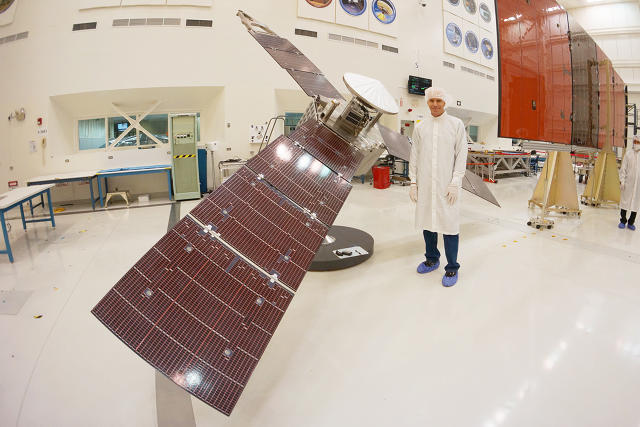
A Planet On Steroids
Jupiter has more mass than everything in the solar system—planets, comets, satellites, and asteroids combined—and could fit a thousand Earths inside. The background radiation is immense. On Earth, we’re exposed to .39 of a rad. On Jupiter, it’s 20 million rads.
“Everything about Jupiter is extreme. It’s a planet on steroids,” says Bolton. “It’s got the strongest aurora, the fastest moving atmosphere, strongest magnetic and gravitational fields, and most intense radiation levels.”
In order to protect against radiation’s degrading effects on the electronics, the instruments and computers are housed in a vault shielded by more than 440 lbs. of titanium. Side louvers protect against temperature extremes by shifting position to either radiate heat away from or insulate individual components.
A mounted camera—the JunoCam—will be encased in a heavy tungsten copper alloy with extra glass over the lenses and a titanium sunshade. It will contain a full sensor with blue, green, and red filters for visual images, and a methane filter photographing in the near-infrared spectrum at 890 nm, to determine cloud structure altitude—the brighter the image, the higher the cloud.
“Juno is an armored tank going to the most hazardous place in the solar system,” says Bolton. “Jupiter is a gigantic motor, and we’re sticking a huge spacecraft with solar arrays that’s conducting into that motor. We’re throwing one motor into another that’s the strongest one in the solar system. Juno is probably the most shielded spacecraft ever designed and moving faster than any spacecraft has ever gone. By the time we arrive at Jupiter and fire our engines, it will be the fastest human-made object in history [at 165,000 mph]. We’re throwing every advantage we’ve got at it.”
The July 4 event, which will stream live from JPL, won’t produce a dramatic photo at the end of evening the way the Curiosity landing did. Those images will come later.
“At the time of orbit insertion, we turn off everything that isn’t essential—science experiments and cameras—to make the orbit insertion work,” says Juno project scientist Steve Levin. “The last data we get from any of that stuff is a few days before the last engine burn. Then, it’ll be a couple of days before we turn it on again and start receiving data. Then 53 days, on August 27, we go by Jupiter with all the science instruments and the rocket engine turned off. That’s going to be our first good look at Jupiter close up. I’m really optimistic that we’re going to get some fun and interesting things.”
What They’re Studying
Scientists will study Jupiter’s interior structure; how it rotates; the existence and makeup of a rocky core; atmospheric composition and dynamics; levels of water, oxygen, and ammonia; and the behavior, structure, and origin of its magnetic fields.
The spacecraft will revolve every 30 seconds enabling the 360-degree samplings. Magnetometers and plasma wave instruments measure intensity and direction of magnetic fields. Other instruments will measure gravity fields to gauge how Jupiter’s mass is distributed, ascertaining whether it has a core of rocky elements at its center and what size. A microwave antenna will probe the top layers meteorologically, measuring ammonia, water, and oxygen levels and the depths of zones and belts. A high-gain antenna will send the data back to Earth.
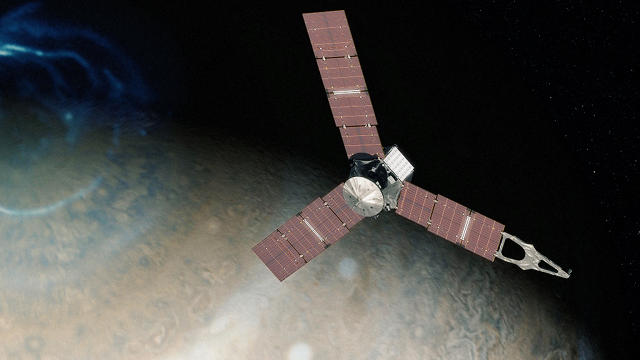
Solar-Powered Arrays
The three 28-foot, 250-lb. solar arrays contain small solar cells that power the spacecraft. At the distance of Jupiter, it will harness enough sunlight to generate 400 watts (think four 100-watt lightbulbs’ worth).
“That’s enough to power all the instruments as well as the engineering and electronics,” says Stuart Stephens, mission planner for Juno. “There will be some degradation in the solar cells due to radiation, so later in the mission, we’ll have slightly less output than that, but still have enough power. When Juno was launched, the arrays were folded up against the side of the launched vehicle faring at the top of the rocket. It did a one-time unfurling within an hour after launch in order to get sun on the arrays to power it. Otherwise, it wouldn’t have survived.”
The biggest challenge in designing the craft was finding a balance between mass and function. “The solar array needs to be large enough to power the mission, but small enough to enable a payload of desired science experiments,” says Doug Bernard, a project systems engineer during development.
In the end, June weighed roughly 3,500 pounds without fuel; the liquid propellant was another 6,000 pounts. “You need a lot to get to Jupiter and then slow down enough for Jupiter’s gravity to catch us,” adds Bernard. “A large engine could slow the craft down quickly; many small engines are less efficient and take longer. We had to look at what engines were available and could fit on the vehicle.”
Getting The Public Involved
Naturally, this isn’t a JPL mission without a little creative, educational outreach.
People can follow the Juno mission through Eyes on the Solar System, an app you can download on your computer enabling you to ride along beside Juno as it goes through its paces. The app connects to the JPL databases, facilitating mission updates to the app.
The public will be able to vote on JunoCam photo targets, which will then be posted to the mission’s JunoCam page. People will be able to download the raw images, process them, and upload them back to the site.
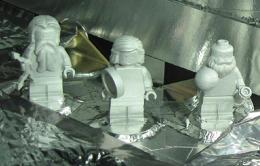
As part of its partnership with JPL to encourage STEM learning, Lego donated three miniature space-grade aluminum Legonauts—dubbed Galileo Galilei, the 17th century astronomer who first noticed Jupiter’s moons circling Jupiter, giving rise the modern belief in a heliocentric universe, and the Roman mythological gods Jupiter and Juno. Jupiter was a mischievous king who shrouded himself in clouds to hide his antics from Juno, his wife and sister (don’t ask) who’d peer through the clouds to see Jupiter’s true nature.
“The spacecraft Juno uses its powers in the guise of science instruments to see through those clouds and the special nature of Jupiter to help us understand our history,” says Bolton.
Live coverage of mission overviews and orbit insertion day will stream at: http://www.nasa.gov/nasatv, http://www.ustream.tv/nasa, and http://www.ustream.tv/nasajpl, and orbit insertion day only on Facebook Live at: http://www.facebook.com/nasa and http://www.facebook.com/nasajpl.
Illustration of Jupiter’s magnetic field is represented by soft purple lines that connect its north and south magnetic poles.
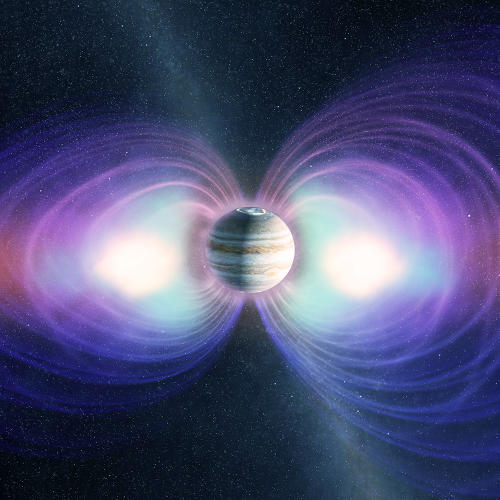
Speed comparisons between Juno and other man-made vehicles
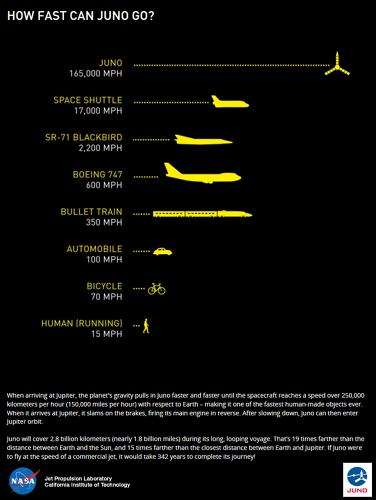
Illustration of Juno orbiting Jupiter
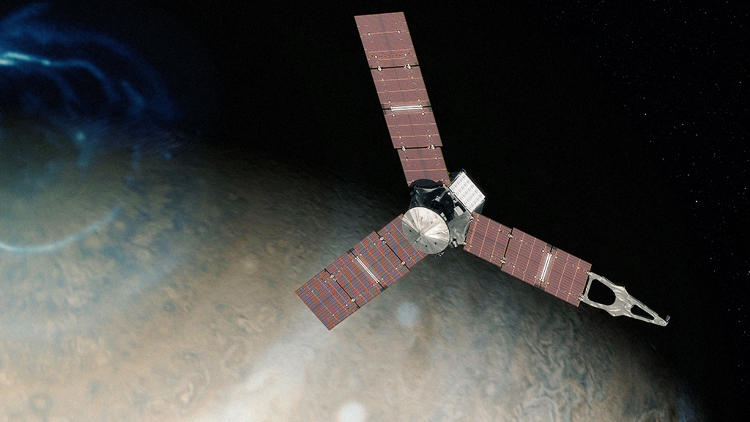
Instrument operations engineer Elsa Jensen holds JunoCam components and protective casing.
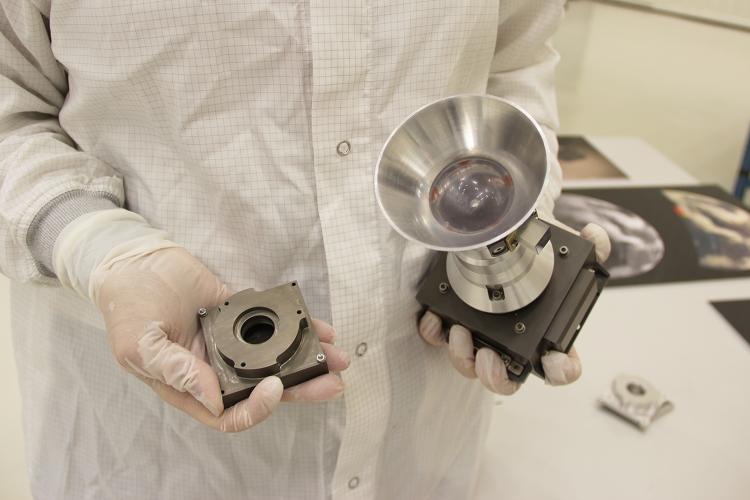
The Eyes on the Solar System app allows users to follow along on Juno’s mission.

Juno mission planner Stuart Stephens stands next to a quarter-scale model of the Juno spacecraft in the JPL clean room.

Project systems engineer Doug Bernard gives a TV interview next to a full-size model of a solar array.
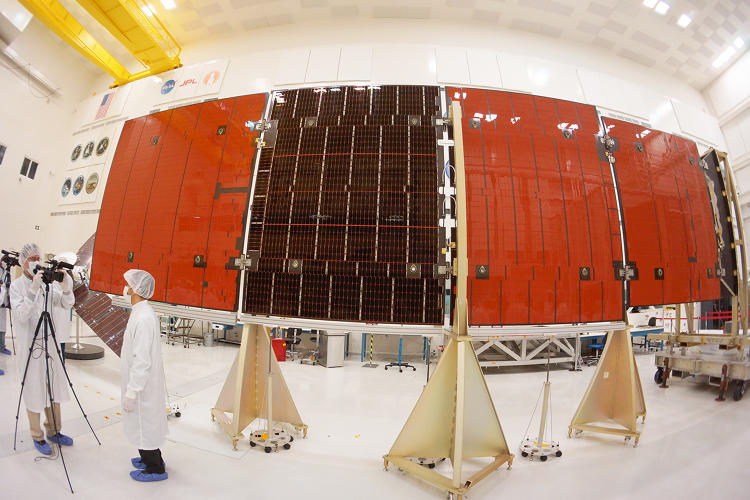
Juno principal investigator Scott Bolton explains the Juno mission to press during a media day in the JPL clean room.

Instrument operations engineer Elsa Jensen with Malin Space Science Systems in San Diego and the JunoCam operations engineer.
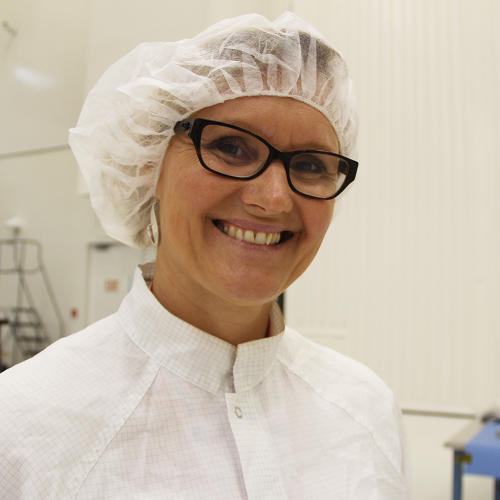
Project systems engineer Doug Bernard

Kevin Hussey, manager of visualization technology, applications, and development, whose team designed the Eyes on the Solar System app.
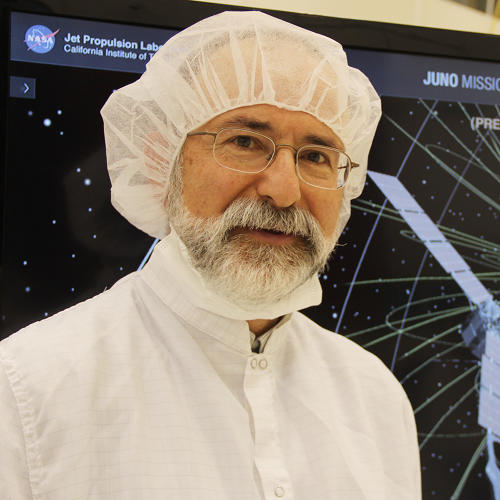
Scott Bolton, Juno’s principal investigator and chief scientist
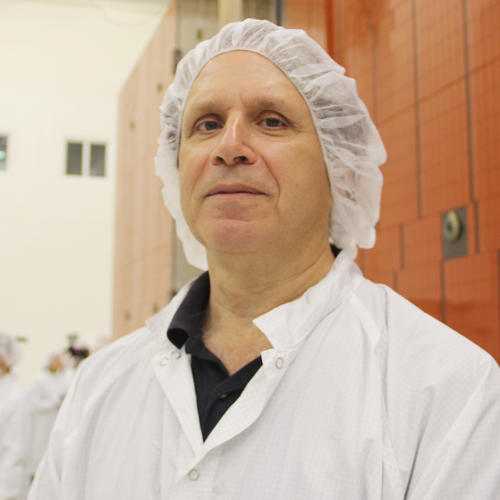
Juno project scientist Steve Levin
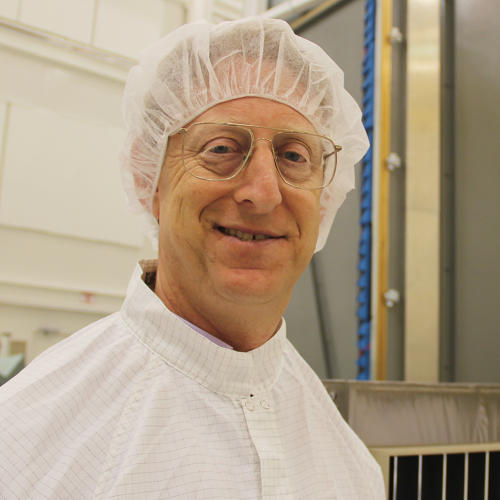
Juno mission planner Stuart Stephens
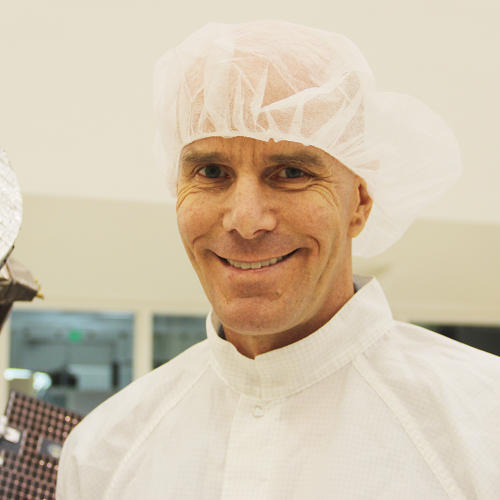
Replica of the titanium-encased vault that houses the electronics and computers
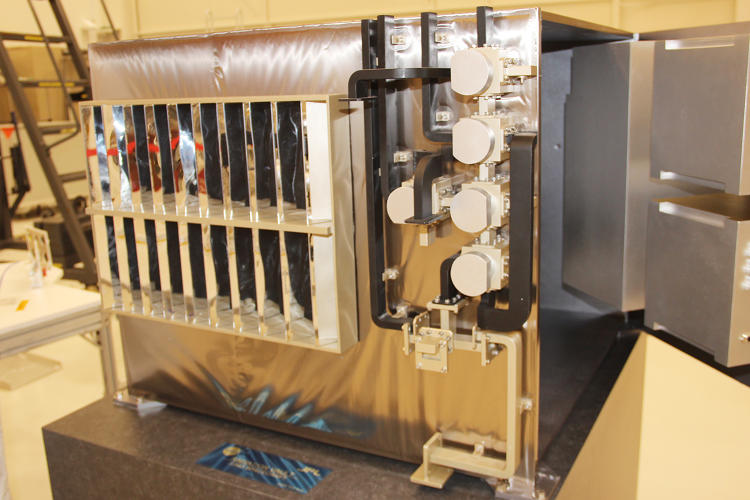
Quarter-scale Juno model
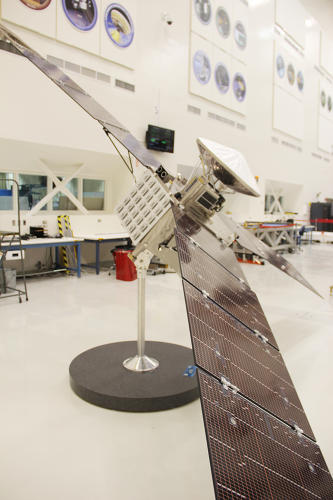
Observation desk allowing visitors to view the clean room
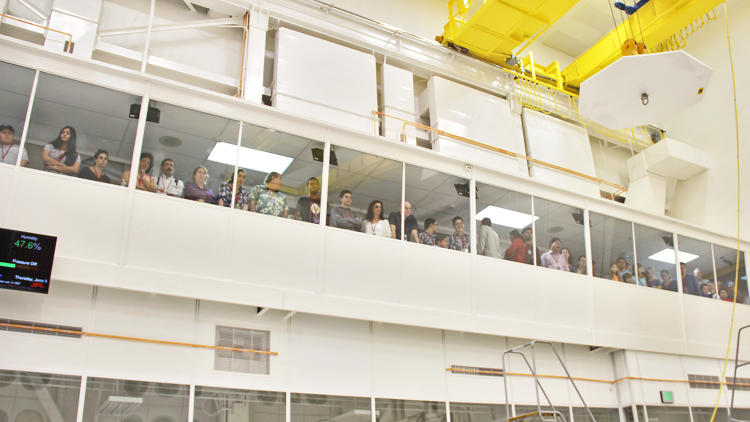
Fast Company , Read Full Story
(49)



